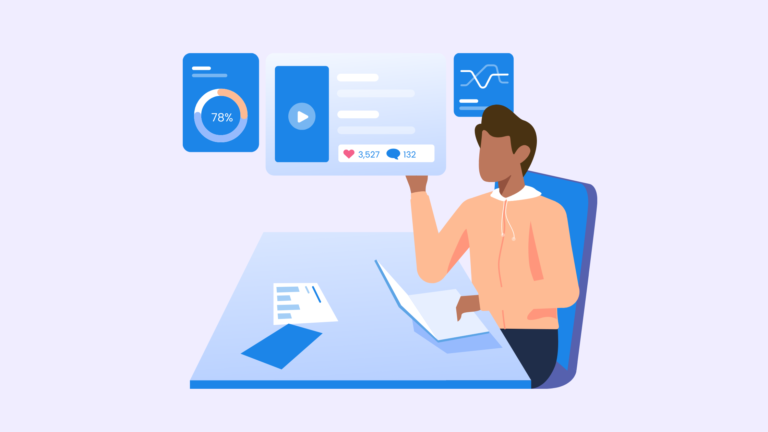Net Promoter Score (NPS) is a key metric used to measure customer satisfaction and loyalty, determining how likely customers are to recommend your product or service.
A high NPS is a strong indicator of customer satisfaction, which directly correlates to business growth and long-term success. Research shows that companies with high NPS scores grow at more than twice the rate of their competitors. Improving your NPS can lead to better customer retention, increased referrals, and overall enhanced brand loyalty.
In this article, we’ll explore 11 actionable ways to improve your Net Promoter Score (NPS) and boost your customer experience.
1. Understand the NPS Feedback
To truly leverage your Net Promoter Score (NPS), it’s vital to move beyond the numeric score and dig deep into the feedback itself. While the score offers a snapshot of customer sentiment, the qualitative feedback attached to NPS responses reveals the real reasons behind customer loyalty or dissatisfaction.
By categorizing this feedback into themes, you can identify specific pain points or success areas that may be missed in broader metrics.
For example, recurring complaints about usability might suggest a need for UX improvements, while praise about a feature’s effectiveness may point to opportunities for expansion.
Understanding these nuances empowers you to implement targeted improvements, aligning your product with customer expectations and driving better satisfaction.
2. Act on Customer Feedback
Merely collecting NPS feedback isn’t enough—it’s what you do with it that counts. Responding to customer insights is one of the most effective ways to show you value their input and are committed to continuous improvement.
Beyond just addressing complaints, developing a system to prioritize and act on feedback ensures your efforts align with what matters most to customers. Whether through product updates, feature enhancements, or improved customer support, let customers know their feedback is being used.
For example, implementing an NPS follow-up survey or closing the feedback loop with targeted communications can significantly boost customer satisfaction. When customers see tangible results from their suggestions, their trust in your brand deepens, which can lead to higher NPS scores and improved loyalty.
3. Personalize Customer Interactions
Customers are not one-size-fits-all, so why treat them as such? A personalized approach to customer interactions can dramatically improve NPS scores. Tailoring communication based on individual customer needs and preferences fosters a deeper emotional connection with your brand.
Use data insights to anticipate customer requirements and provide solutions that are specific to them. This can include personalized product recommendations, context-sensitive support, or even proactive outreach based on their usage patterns.
In customer service, for instance, addressing a customer by name, remembering past interactions, or offering solutions based on their unique situation transforms a standard exchange into a meaningful conversation.
By personalizing every touchpoint, you demonstrate that you understand and care about their experience, resulting in higher satisfaction and more promoters.
4. Improve Customer Onboarding
The onboarding experience can make or break a customer’s perception of your product. It’s your first real opportunity to demonstrate value, and a flawless onboarding process can significantly impact your NPS.
A truly exceptional onboarding journey goes beyond tutorials—it’s about creating a seamless, intuitive path that helps users understand how your product meets their specific needs. To elevate onboarding, consider breaking it down into bite-sized, goal-oriented steps that gradually introduce key features at the right time.
Interactive walkthroughs, personalized guidance, and offering instant help channels when customers encounter roadblocks can make users feel more comfortable and confident. By addressing customer needs upfront, you’re setting them up for success, ensuring they reach their “aha” moment sooner, and reducing frustration that could otherwise lead to negative feedback.
A strong onboarding experience not only drives engagement but also creates loyal customers who are more likely to advocate for your brand.
5. Offer Proactive Support
Customer support isn’t just about reacting to problems—it’s about anticipating them. Proactive support involves reaching out to customers before issues arise, ensuring their experience stays smooth and frustration-free.
For example, setting up automated alerts for key events—like unusual usage patterns, technical glitches, or potential service interruptions—allows you to contact users before they even notice a problem.
Proactive support also includes providing helpful resources like guides or FAQs that preemptively address common issues. This approach not only reduces customer frustration but also increases customer loyalty, as they feel well taken care of, even before they need to ask for help.
By anticipating needs, you show that you’re deeply invested in your customers’ success, which can lead to higher NPS scores and greater retention.
6. Focus on Product Improvements
A key driver of a high NPS is the constant evolution of your product based on customer feedback and emerging industry trends. When users see that their feedback directly influences product improvements, it not only validates their input but also makes them feel heard and valued.
Regularly updating your product with features that solve real user pain points enhances usability, boosts customer satisfaction, and aligns your offering with customer needs.
Incorporate a feedback loop within the product to continuously collect user insights, which will inform your updates. A product that consistently improves over time fosters loyalty and satisfaction, leading to more promoters and fewer detractors.
7. Build Strong Customer Relationships
Building lasting relationships with customers is crucial to improving NPS scores. A transactional relationship with your customers often leads to churn and dissatisfaction, while a relationship based on trust and mutual benefit encourages loyalty.
Use customer relationship management (CRM) tools to track interactions, personalize communications, and engage customers at every stage of their journey. Regular check-ins, customized recommendations, or thoughtful follow-ups after purchases all demonstrate that you care about their success.
When customers feel like they are more than just a number, they are more likely to share positive feedback and become advocates for your brand. Strong relationships lead to a more engaged customer base and higher NPS scores.
8. Set Clear Expectations
One of the most common causes of customer dissatisfaction is unmet expectations. When customers are uncertain about what your product offers, they’re more likely to be disappointed. To mitigate this, it’s crucial to set clear expectations right from the start. Communicate transparently about product features, pricing, and capabilities, especially in the onboarding process.
Regularly update customers about new features, updates, and product improvements so they know what to expect and how to maximize their experience. By ensuring that customers fully understand the value you offer, you help prevent misunderstandings, reduce frustration, and increase overall satisfaction, which positively impacts your NPS.
9. Train and Empower Your Team
Your team plays a pivotal role in shaping the customer experience. A well-trained customer-facing team can handle complaints, questions, and feedback effectively, turning potential detractors into loyal promoters.
Providing ongoing training on empathy, communication, and problem-solving ensures that employees are well-equipped to engage with customers in a customer-centric manner. Encourage cross-departmental collaboration so that every team, from marketing to customer support, understands the importance of customer satisfaction and can contribute to improving the NPS.
Empowering your employees to make decisions and solve problems on the spot can also lead to quicker resolutions and a better overall customer experience.
10. Incentivize NPS Participation
Encouraging customers to participate in NPS surveys is essential for gathering actionable feedback.
However, many customers are reluctant to take surveys unless there’s an incentive. Offering small rewards like discounts, freebies, or entry into a prize draw can boost response rates, making the survey process more engaging.
It’s also important to keep surveys short, simple, and accessible across devices to reduce friction and ensure customers are more likely to participate. Additionally, ensuring customers feel their responses are valued by following up with changes based on feedback can further encourage future survey participation.
Higher survey participation means more data to fine-tune your customer experience and improve NPS.
11. Monitor NPS Regularly
Monitoring NPS isn’t just a one-time task—it should be an ongoing process. Continuously measuring your NPS at different touch points throughout the customer journey allows you to capture real-time insights into customer satisfaction.
For instance, consider tracking NPS after key events like product launches, onboarding completion, or customer support interactions. Automated NPS surveys triggered by these touchpoints make the process seamless and efficient.
Regular tracking also helps identify trends, so you can spot issues before they escalate and celebrate wins when customer sentiment improves. The more frequently you monitor NPS, the more accurate and actionable your insights will be, helping you continuously improve customer experience and satisfaction over time.
Conclusion
Improving your Net Promoter Score (NPS) is a continuous journey that involves understanding customer feedback, offering proactive support, and focusing on product improvements. By personalizing interactions, setting clear expectations, and building strong relationships, you can foster loyalty and reduce churn.
Training your team, incentivizing NPS participation, and regularly monitoring your score will provide valuable insights to enhance the customer experience. Implementing these 11 actionable strategies will not only increase customer satisfaction but also pave the way for long-term business growth and success.





